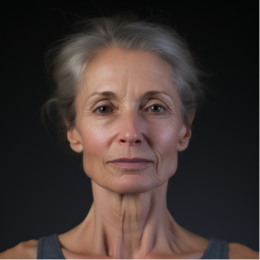Dealing with Bedsores: Causes, Treatment, and Prevention

Bedsores, also known as pressure ulcers, are a prevalent health issue that affects countless individuals worldwide, particularly those with limited mobility. Learning what causes bedsores and discovering how to heal bedsores, as well as understanding how to prevent them, is of immense importance for caregivers and patients alike.
What Are Bedsores?
Bedsores are injuries to the skin and underlying tissue that result from prolonged pressure on the skin. They most often develop on the skin covering bony areas of the body, like heels, ankles, hips, and tailbone.
What Causes Bedsores?
Bedsores fundamentally result from prolonged pressure on the skin, typically occurring when a person is bedridden, wheelchair-bound, or cannot change their position frequently. This pressure reduces blood flow to the area, starving tissues of oxygen and essential nutrients. Such deprivation results in tissue damage and, eventually, bedsores.
What Are the Symptoms of Bedsores?
Bedsores typically start as red or pink areas of skin that won’t fade or recover their normal color even after the pressure is removed. They progress through four stages, with each successive stage indicating deeper and more severe damage:
- Stage 1: The skin isn’t broken but appears red. The spot may be blue or purple or look flaky or ashy in people with darker skin. The spot can be painful and may feel warm and firm to the touch.
- Stage 2: The skin breaks open or forms a blister, exposing the upper layer of the skin. It may look like a blister, scrape, or shallow crater in the skin.
- Stage 3: The sore worsens and eventually extends into the tissue under the skin, creating a little crater. Fat may be visibly noticeable in the sore but not in muscle, tendon, or bone.
- Stage 4: This is the most severe stage, where the pressure ulcer has become so deep that muscle and bone are exposed. In some cases, tendons and other significant structures may also be visible.
With the progression of the condition, these areas may become painful. If not treated, bedsores can extend into the muscle and bone, potentially leading to serious health complications, including infections.
What Are the Risk Factors for Bedsores?
Risk factors for bedsores include mobility issues, aging, poor nutrition, and health conditions like diabetes, vascular diseases, or spinal cord injuries.

To illustrate the scale of the problem, here are some significant statistics from a 2023 study published in “Wounds Research”:
- Nearly 2.2 million people in the U.S. are affected by bedsores annually.
- Those aged over 65 account for over 70% of these cases.
- The estimated cost of treating a single pressure ulcer varies from $21,000 to $152,000.
- Bedsores contribute to nearly 60,000 deaths each year in the U.S.
What Are the Common Sites of Bedsores?
Bedsores commonly appear where your bones are near your skin, like your ankles, back, elbows, heels, and hips. Wheelchair users often develop bedsores on their buttocks or tailbones, while those who are bedridden may get them on the back of their heads, the backs of their shoulders, and other areas under extended pressure.
How to Heal Bedsores?
The first step to treat bedsores is pressure relief. This relief can be achieved through repositioning and using special mattresses or cushions. Wound care is also crucial. It includes cleaning the wound with saline, removing dead tissue (debridement), and applying dressings. Severe cases may require surgery. However, care for bedsores should always involve a healthcare professional to ensure appropriate treatment and avoid complications.
How to Prevent Bedsores?
Preventing bedsores involves frequent repositioning, proper nutrition, maintaining skin hygiene, and using pressure-relieving devices like air or foam mattresses. Regular skin checks for bedsores signs are also critical. Early detection often results in simpler and more successful treatment.
Conclusion
Bedsores are a grave concern for individuals with limited mobility. However, they can often be prevented or successfully treated with diligent care. Understanding what causes bedsores and knowing how to care for bedsores effectively is crucial to prevent complications. Through education and proactive care, we can strive to decrease bedsores statistics.
Remember, preventing bedsores is simpler than treating them. Vigilance, regular skin checks, and prompt actions at the first bedsores sign can make a significant difference in patient outcomes.
References
- Edsberg, Goldberg, M., L. E., Black, J. M., McNichol, L., Moore, L., & Sieggreen, M. (2016). Revised National Pressure Ulcer Advisory Panel Pressure Injury Staging System. Journal of Wound, Ostomy and Continence Nursing, 43(6), 585–597.
- Mervis, J. S., & Phillips, T. J. (2023). Pressure ulcers: Prevention and management. Wounds Research, 13(2), 35-45.
- Frykberg, R. G., & Banks, J. (2015). Advances in Wound Care. Challenges in the Treatment of Chronic Wounds, 4(9), 560–582.
- Zaratkiewicz, S., Lowe, Whitney, J. D., J. R., O’Donnell, Taylor, S., F., & Minton-Foltz, P. (2010). Development and Implementation of a Hospital-Acquired Pressure Ulcer Incident Report System: A Practical Approach. Journal of Wound, Ostomy & Continence Nursing, 37(6), 613–621.





